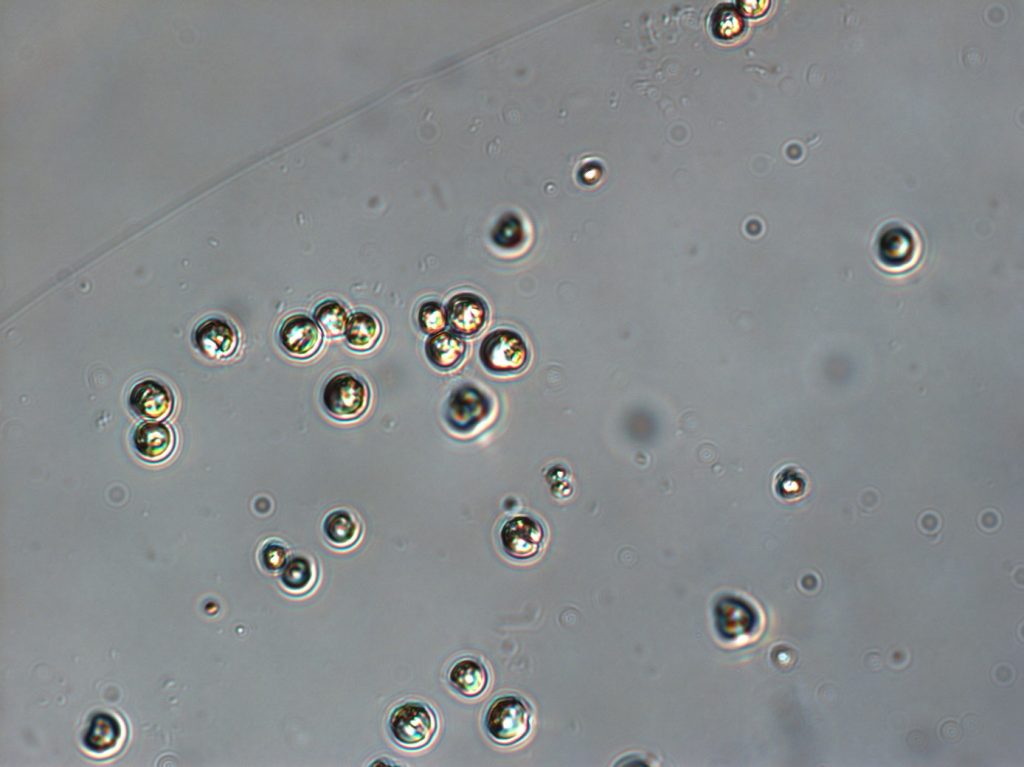
Toxin Produced: none; produces dimethylsulphide
Syndrome: none described; large blooms may produce foam
Phaeocystis can be found as a colony of cells encased within a mucus layer, or as single cells. The colonies may form large blooms and produce foam, which can accumulate on beaches. Phaeocystis blooms produce dimethylsulphide (DMS), an aerosol, which may contribute to cloud formation and acid rain.
